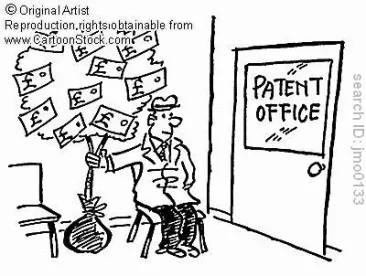In its Final Written Decision, the Board determined that Petitioner had shown that all challenged claims of the ’888 Patent are unpatentable. The ’888 Patent discloses an audio recording device that the specification terms a “music jukebox.”
The Board began with claim construction, stating that the terms are analyzed in light of the broadest reasonable interpretation. At institution, the Board construed the term “selectively accessing” as “obtaining from a number or group by fitness or preference.” During trial, Petitioner argued that this construction was not correct because “by fitness or preference” is found only in a single dictionary definition and is inconsistent with the broadest reasonable interpretation. The Board disagreed, and did not alter the construction of the term.
The Board then turned to whether claims 1-15 are obvious over Keller and Martin. Keller is the parent of the ’888 Patent and contains a specification that is substantially similar to the ’888 Patent. Petitioner asserted that Keller discloses all of the limitations of the challenged claims except that “said apparatus being configured to display said list of names of sound tracks stored in the non-volatile memory of the apparatus without the apparatus having to be connected to a network service center containing the names.” Petitioner relies on Martin for that disclosure.
Patent Owner argued that Keller is not prior art to the ’888 Patent because the ’888 Patent claims priority to application 09/111,989, filed July 8, 1998. Petitioner argued that the ’888 Patent is not entitled to this earlier filing date because Patent Owner added new matter during prosecution. The Board noted that the burden of production is on Patent Owner to make a claim of priority that the challenged claims are entitled to a filing date earlier than the prior art, but the ultimate burden of persuasion in the inter partes review remains on Petitioner to prove unpatentability. In the Decision to Institute, the Board concluded that Patent Owner had not met its burden of production on the priority date because it did not introduce any parent application into the record. During trial, Patent Owner introduced several parent applications into the record. Therefore, the Board found that Patent Owner had met its burden of production. Regarding Petitioner’s burden of persuasion, the Board cited to recent Federal Court precedent and rejected Petitioner’s argument that the claims are not entitled to an earlier priority date because Patent Owner fails to identify any teaching in the specification that excludes the network service center. Therefore, the Board did not find the claims unpatentable on this ground.
The Board then discussed whether the challenged claims are obvious over Nathan ’259 and Nathan ’255. The Board noted that Patent Owner does not contest that a person of ordinary skill in the art would have combined the disclosures of Nathan ’259 and Nathan ’255, but disputes the interpretations of those references and whether they disclose all of the elements of the challenged claims. Regarding disclosure, the Board determined in its Decision to Institute that the record did not support Patent Owner’s interpretation of the Nathan references, and after considering Patent Owner’s evidence at trial, the Board agreed with Petitioner’s argument. The Board then went on to determine that the Nathan references disclose all of the limitations of the challenged claims.
The Board then discussed objective indicia of nonobviousness. Patent Owner argued that the “clear commercial success” of the invention demonstrates its nonobviousness, and supported this argument with a number of confidential licenses that have generated more than $10,000,000 of gross revenue. The Board stated that Patent Owner must show a nexus between the merits of the invention and the licenses of record. The Board agreed with Petitioner that the evidence provided by Patent owner does not establish a sufficient link between the merits of the invention and the taking of the licenses. The Board noted that Patent Owner’s deponent did not comment on whether the licenses were taken because of threatened litigation.
The Board then reviewed whether the challenged claims are obvious over Sound Blaster, Lucente, and Ozawa. Patent Owner argued that the references are not combinable because the combined teachings would produce an inoperable device. Patent Owner did not argue that the references do not disclose all of the elements of the claims if combined, therefore, it waived those arguments.
The Board then addressed whether the Sound Blaster reference is excluded. Patent Owner moved to exclude the exhibit on several grounds. The Board noted that Patent Owner did not identify where in the record its objections to evidence were made prior to moving to exclude. Therefore, the motion is procedurally deficient. The Board also found that the motion failed substantively. The Board found that the declaration supporting public availability of Sound Blaster is not hearsay, and that the copyright date on the Sound Blaster reference was not hearsay. The Board also found that Sound Blaster was properly authenticated.
The Board then addressed the combinability of the references. Patent Owner noted the hardware incompatibilities between the tablet compute of Lucente and the software of Sounds Blaster. The Board agreed with Petitioner that the references could have been combined by a person of ordinary skill in the art recognizing the advantages of Sound Blaster’s functionality and then incorporate those into Lucente.
HTC Corporation and HTC America, Inc. v. Advanced Audio Devices, LLC, IPR2014-01158
Paper 36: Final Written Decision
Dated: January 22, 2016
Patent 8,400,888 B2
Before: Scott A. Daniels, Christopher L. Crumbley, and Georgianna W. Braden
Written by: Crumbley



 />i
/>i

